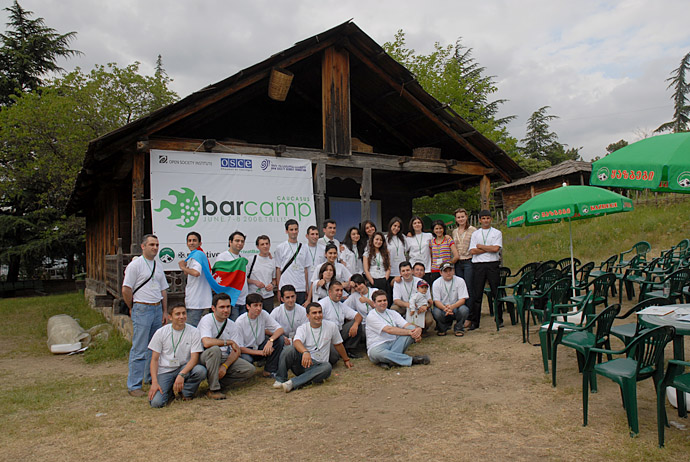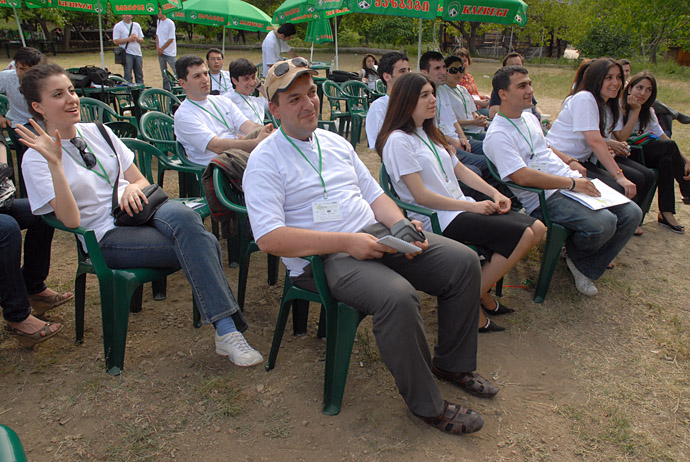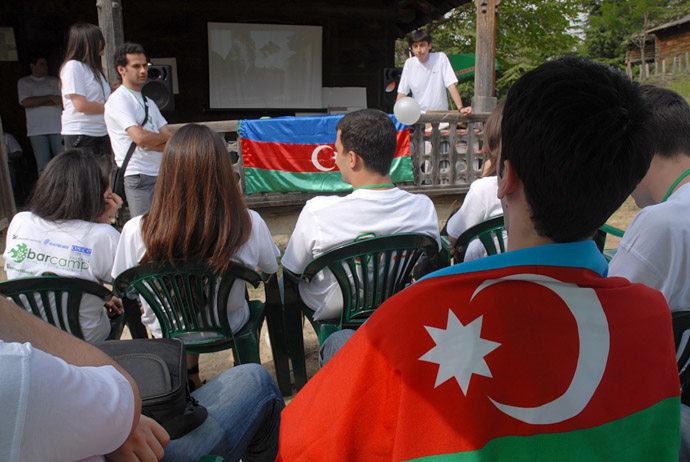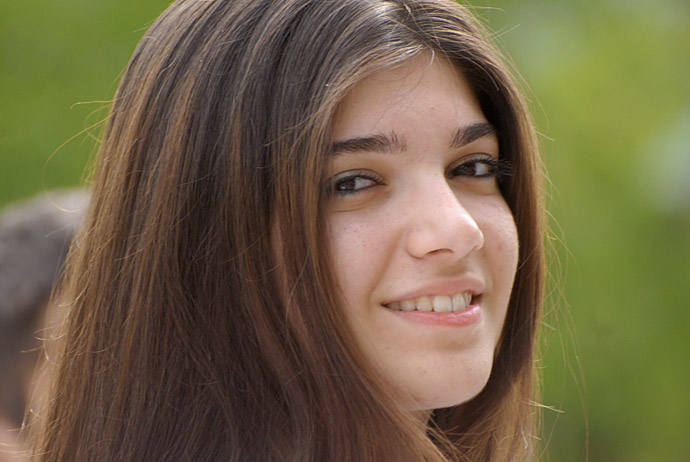Social media and conflict resolution in the South Caucasus

In the 15 years since the May 1994 ceasefire agreement put the conflict between Armenia and Azerbaijan over the disputed territory of Nagorno Karabakh on hold, various peace proposals have faltered. But if Armenia’s first president, Levon Ter-Petrossian, was forced to resign in 1998 by nationalist hardliners in his government opposed to a compromise settlement, the main obstacle in recent years has been public opinion.
In Azerbaijan, belicose rhetoric against Armenians has become common, and even recently spilled out into something as trivial Eurovision, while political forces in Armenia — and on both sides of the divide — recklessly exploit the conflict to either maintain or come to power. Meanwhile, the local media continues to perpetuate negative stereotypes of the "enemy" while propaganda and misinformation on both sides has drowned out what little communication and discussion there has been — or prevented what could be.
Of course, it shouldn’t come as any surprise. With new generations of Armenians and Azerbaijanis unable to remember the time when both lived side by side together in peace, such rhetoric is extremely effective in post-Soviet societies where intolerance has risen to alarming levels and critical independent thinking is discouraged. Ironically, as Thomas de Waal wrote three years ago, the same reality might well be behind the conflict in the first place.
Contradictory national narratives pervaded both societies at all levels. Before fighting began, intellectuals had formulated detailed arguments that formed a national frame of reference for what happened on the battlefield. These positions were first staked out during the 1960s post-Stalinist ‘thaw’ initiated by Soviet leader Nikita Khrushchev, which created conditions for sanctioned, or ‘orthodox’, forms of nationalism. These proved difficult to control, however, as diametrically opposed versions of history were later propagated by writers such as Zia Bunyatov and Zori Balayan.
When the dispute broke to the surface in 1988, teams of pamphleteers and propagandists on both sides were ready to rush into the breach and they began producing works with titles such as ‘Karabakh: the guilty party in the tragedy is well known’. Disappointingly little has changed in this regard. These ideological battles continue to this day on the internet among a narrow audience, yet opinion polls in both countries suggest an overwhelming majority of respondents find it impossible to countenance Karabakh being given to the ‘other’ in any peace agreement. […] […]
A key point must be made here, which is that these underlying structural tensions in the architecture of the region had little impact on the daily life of the residents living there. As most Armenians and Azerbaijanis will tell you, they traditionally had a better trading relationship with each other than either community did with Georgians; rates of intermarriage were also high. Soviet Karabakhis from both communities tended to be bilingual, on good terms with their neighbours and little concerned by the nationalist narratives being advanced by intellectuals in Yerevan or Baku.
It is an elementary mistake therefore to see the Karabakh conflict as a clash of ‘ancient hatreds’ or as a religious dispute. Links of culture, business and marriage still bind Armenians and Azerbaijanis together in Moscow, Georgia and Iran – anywhere in fact outside the zone of the Karabakh conflict.
[…] […] the heart of the conflict lies within the narrow political narratives that Armenia and Azerbaijan have come to employ both in imagining themselves and the other. To break out of the prison of the conflict, they need to begin the titanic effort of a genuine dialogue about their common future. […] link
True, Armenians and Azeris have been meeting at conferences, workshops and other events aimed at promoting regional stability and peacebuilding in the years since the ceasefire, but none have had any noticeable effect on relations between the two countries. Cynics even argue that such meetings in third countries amount to little more than all-expenses paid trips abroad while others question whether occasional meetings can ferment genuine relationships and cooperation between those involved in the first place.
Even Internet forums established to facilitate communicaiton between the two sides usually end up as new battle grounds. One civil society activist in Armenia explained it thus:
Observing the methodology was my deepest disappointment and frustration with Armenian-Azerbaijani rapprochement. I’m not sure, but it’s either a lack of professionalism or deliberated hostility training/simulation… And now they’re are looking for people with blogging experience. Why? Do they need new technologies and levers to disseminate that enmity, frustration online?
Yet, despite the risks, the increasing popularity of sites such as Facebook as well as other new mediums for self-expression such as blogs offers the potential for social media and other online tools to move in to fill the information gap and cross the communication divide. In an interview held for Global Voices Online, Micael Bogar, Projects Manager at the American University’s Center for Social Media offered her own opinion. Although not a means in an end in themselves, these tools certainly have a place as part of larger and wider initiatives.
However, she says, many of those working in this area are not interested in using low cost tools which could prove more effective than what exists at present because international donors are not interested in supporting lower cost initiatives while those involved in existing projects receive larger grants for activities even if they turn out to be unsustainable. Nevertheless, those who realize that establishing trust and forming friendships has to occur daily could use such tools as Facebook and Skype to cross ceasefire lines and closed borders to contribute to the process.
[…] I think you can’t do it just with social media tools, but as we’ve seen over the past 15 years you definitely can’t do it by meeting in Tbilisi for a weekend every summer. It becomes just like Facebook – an entertainment – and I’ve had experience with these conferences in Tbilisi where it’s just one big coffee break and a waste of money so I think that both of those combined could propel us along.I hate to be a pessimist, but I think that much of civil society currently working on peace building initiatives are not necessarily not very serious about their work, but many are just in the NGO world to make a living. I think there’s a clear sort of radical character or quality that’s needed in order to be serious about conflict resolution in the South Caucasus and I would say that it requires almost a rejection of the current system in place.
I think that when you have those fundamental elements in an activist or a conflict-resolution advocate then it’s going to be a natural move to go into social media […]. For those who aren’t using it, I think they’re either just older and not aware of it or just uninterested in using cheap tools when they get can receive big grants to keep themselves in business. link
I had those moments when I would have been one of those people who said this is not going to work and even after we were into it for a week or so. Sometimes you just think that there is no way that these students are going to find consensus. Initially, when you’re doing a program like this – and my background is with the Israelis and Palestinians, actually – you work in those situations and you’re really optimistic that the students will find commonality simply because they’re teenagers, and then inevitably something is said, some small comment is made, and it just gets explosive and you think wow, this is not going well. There were those moments where I thought that I had underestimated the intensity of the conflict and students’ emotions, but they came back together.I was so impressed with the students when they got involved in an intense conversation. There were a lot of tears, but they would really pull themselves out of it […]. By the time we were done, and we started off with students not even making eye contact, they were giving each other a hug or trading email addresses after really exhibiting a commitment to continue their work. That was really an inspiring moment […].[…] but my optimism is definitely tempered by a realization that these are young people who are soon going to be on the frontlines.[…]The leaders are talking to each other, but god forbid that people actually do. link
[…] if Adnan and Emin could see this they’d probably be kind of proud of the fact that this small kind of rapprochement has taken place.[New media tools] will certainly help in getting young people to get better acquainted with each other, but at the same time you have to realize that it also helps people reaffirm their biases. If you go round the Internet and look for Armenian and Azerbaijani web sites that speak of the other country you get into a lot of trash and very harmful discourse from nationalist websites.
I do hope that people get better acquainted and get to know each other’s culture better and realize how close they are actually related culturally and socially, but one cannot ignore the existence of a lot of web sites and online users who actually fire up the differences between the two nationalities. So, I’m mildly optimistic, but at the same time think we should be very cautious as well about what we find on the Internet as well. link
Time will tell whether many involved with peacebuilding and conflict resolution initiatives will migrate at least some of their activities online, but there is also the danger that will not devise a well thought out strategy in order to do so. Moreover, although peace activists such as Georgi Vanyan are very open in their offline and online activities, others are not. Indeed, most deny access to journalists and shy away from any independent media coverage, preferring to keep everything closed or under control in much the same way as governments in the region do.
Information is key, but control of that information remains more important to such groups even if that means the populations of both countries continue to have existing prejudices reinforced by negative images of the other pumped out by the media on an almost daily basis. Until that changes, nothing else will in the South Caucasus. However, as Internet penetration and especially mobile access increases in the region, online social networking and new media tools offer the opportunity to change the situation significantly, but only if there’s the will and expertise available to do so.
For now, prominent bloggers such as Liana Aghajanian and Arzu Geybullayeva represent a glimmer of hope.
I would very much like to have more debate among bloggers in Armenia and Azerbaijan, especially young ones, to share experiences and talk about our day to day lives, basically. It’s just made so difference and I think […] we really need some kind of initiative for debate because I would really, really like to see borders opened and conflict resolved and […] be friends with Armenians. Reminiscing, my mum says that when she went to school she had Armenian friends, Russian friends, it was all a mix and I would very much like myself or my children as they grow up to be able to say the same kind of thing to their children and to their friends. link
Hopefully such voices will not be drowned out by those who will undoubtedly eventually seek to silence them.

Armenian and Azeri bloggers, Barcamp Caucasus, Tbilisi, Georgia © Onnik Krikorian / Oneworld Multimedia 2008

Azeri bloggers, Barcamp Caucasus, Tbilisi, Georgia © Onnik Krikorian / Oneworld Multimedia 2008

Azeri blogger, Barcamp Caucasus, Tbilisi, Georgia © Onnik Krikorian / Oneworld Multimedia 2008
